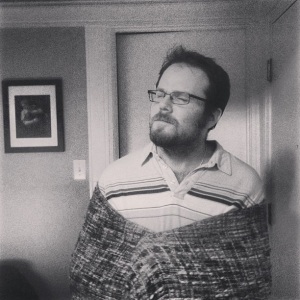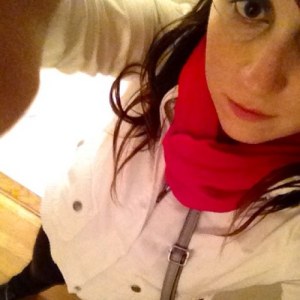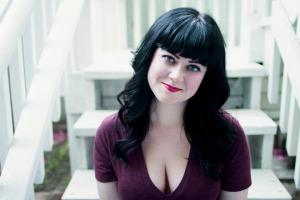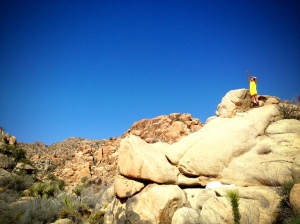2013 was a year of change on multiple fronts and our website was no exception. Though Marissa Skudlarek, as our first “official” blogger, began her semi-monthly contributions in 2012, the eight-writer line up that currently composes the blog’s core writing team wasn’t solidified until October of this year, when Claire Rice was brought on to replace Helen Laroche, who, along with Eli Diamond, stepped away as a regular contributor earlier this year. Eli and Helen, along with the current eight and our lengthy list of occasional contributors (most notably Annie Paladino), all get to share in the success of the blog, which steadily and dramatically increased its traffic over this past year. With 45,611 hits in 2013 (compared to 27,998 in 2012, 11,716 in 2011, and 8,435 in 2010), there can be no doubt that the San Francisco Theater Public (as we’ve taken to calling the blog amongst ourselves) is “kind of a thing.” With our current all time total just shy of 100,000 hits, we wanted to use the last blog entry of this year to celebrate the different voices that make our blog unique, while also paying homage to the vast and diverse world of online theater discussion. To everyone who makes our blog a success, including our dedicated readers and Julia Heitner, our Twitter-mistress who brings every installment to the Twitter-sphere, a gigantic thank you for making 2013 the best year so far! Here’s hoping that 2014 is even better!
STUART BOUSEL by William Leschber
Whether it be Shakespeare, Ancient Greece, Celtic Myth, or the plight of the contemporary 30 something, Stuart Bousel always has something intelligent to say about it, and if you’ve read any of his blogs over the past year you’ll know he has an ample array of in-depth thoughts about these things and so much more. I’m proud to have known Stuart for a number of years and the plentiful hours of intelligent conversation are invaluable to me, but my favorite 2013 blog entry of his is one that offers both a larger social insight and something very personal as well. The Year of the Snake blog isn’t afraid to be vulnerable, and offers the perfect mix of two brands of self awareness: the satisfaction that comes at being proud of one’s achievements, juxtaposed with the self doubt that comes whenever we embark on something new and challenging. These traits are heightened by a particularly uncertain year for myself and so many others who have had an odd go of it in 2013, the Year of the Snake, and maybe that is why this particular blog resonated so strongly. Although this year is possibly the most challenging some of us have had in recent memory, what Stuart articulates so well here is that sometimes we have to pass through the fire to come out stronger from the forge. The process of wriggling into new skin in due time…aye, there’s the rub: “…the truth is, the changes tend to kind of happen while you’re not looking, almost as a side result of trying to change.”

There’s Stuart, emerging from his security blanket just like 2013 emerged from the crap year known as 2012.
In other favorites-of-the-year news, I present you the Q&A with Jeff Goldsmith. For those in constant transit and who have an easier time taking in a podcast over reading articles online, this is for you. Now my favorite podcast surrounding film would fall to Filmspotting where new and old films are discussed weekly with humor and insight. But if I had to choose the single best episode I heard this year it would be Jeff Goldsmith’s interview with writer/director Ed Burns. In the words of the host, the Q&A podcast aims to “bring you in-depth insight into the creative process of storytelling”. He interviews screenwriters specifically (often writer/directors) about how they go about their personal process. Not only are the insights into the writer’s process wonderful to hear but the peeks into their role in the film industry are also fascinating. The Ed Burns episode ranges in topic from 90’s indie films, to his writing process, then on to making micro budget films, and his thought on how the industry is changing and what he’s doing to work in the grain of the dawn of steaming entertainment. It’s great. And here it is: http://www.theqandapodcast.com/2012/12/edward-burns-fitzgerald-familiy.html
ASHLEY COWAN by Claire Rice
Ashley Cowan’s posts often feel like sitting on the couch with your best friend and chatting late into the night with a mug of hot coco. Every post is heartfelt and full of a kind of determined enthusiasm that is infectious. Her post abouttheatre traditions/ superstitions was very funny (if I had known that thing about peacock feathers I might have made different choices with my life.) And her post about her grandmother and goodbyes was touching and beautiful. But my favorite post would have to be Why Being A Theatre Person with a Day Job is the Best…and the Worst. She beautifully lays out the complex and heart breaking experience of knowing a “the show must go on” mentality is an imminently transferable job skill, but a skill hard to sell to non-theatre perspective employers.
I read Dear Sugar’s advice column for the first time on September 1, 2013, my thirty second birthday. The piece I read was Write Like Motherfucker It was surprising, honest and full of so many of the things I had been thinking and feeling. It was and is full of all the things I needed to hear. “We get the work done on the ground level. And the kindest thing I can do for you is to tell you to get your ass on the floor. I know it’s hard to write, darling. But it’s harder not to.”
BARBARA JWANOUSKOS by Stuart Bousel
Barbara Jwanouskos is the kind of theater person who figured out long ago what many of us take much longer to figure out: namely that one can balance theater with the rest of their life (she’s a pretty amazing martial artist in addition to being a playwright, blogger, grad student, and non-profit development expert), and that nothing happens if you sit and wait for it, you have to go after your dreams actively. Smart, generous, good-natured, Barbara’s writing reflects a serious mind and soul you might not immediately pick up on when you first meet her, though her bad-ass-ness is definitely apparent in her punk rock haircuts and straight forward conversation style. Her “calls it as see sees it” voice is still developing in her blog, but with “Young Beautiful Woman” she had a bit of a breakthrough, giving us a story both personally meaningful to her while also showing us where the issue of pigeon-holing women in theater and films begins: that most double-sided of backyards, the fine arts masters’ program. This blog had the greatest reader impact of all the contributions Barbara has made for us this year, and it’s the kind of thing I want to see more of from her. It’s with incredible eagerness I look forward to her 2014 contributions, knowing she plans to really hit our readers, black belt style, with more ideas like these.
Outside of our humble little blog, I have read a number of interesting theater related articles this year, but this one from HowlRound seems to have stayed with me the longest. Though when I first read this I kind of had a reaction of, “Well, duh, it’s just part of the process- stop whining!”, I also admire that what Morgan is saying is that a life in the arts is pretty always a heartbreaking business, even when you do finally find your niche, your project, your collaborators. And it’s heartbreaking not just because of the lack of opportunities, or the difficulty in making a living, or all the other things we also talk about, but just from the sheer fact that if you’re doing it right you’re ALWAYS putting your heart into it and the nature of the business rarely appreciates or honors that- while, of course, still expecting you to throw your whole heart into it every time! I, and most of the theater people I know, spend a lot of time talking about sustainability in the theater community, funding and payroll, audience demographics and marketability, etc. and sometimes I can’t help but wonder when theater started to quantify and qualify itself the way I expect Wal-Mart too. When did it become about numbers and money and conventional ideas of success as represented through big numbers, and not about coming together with people of vision and making cool stuff because the world really needs that? Morgan’s article is a bittersweet plea to remember we’re all artists here and artists are delicate creatures in many ways, even if it’s probably through their strength that, ultimately, the world will be saved.
WILLIAM LESCHBER by Marissa Skudlarek
It has been a pleasure to read Will Leschber’s “Working Title” column since it debuted in September 2013. Theater can sometimes feel like an insular, inward-looking art; it’s not a part of the mainstream cultural conversation in the way that movies, music or TV are (though we Theater Pub bloggers are doing our best to change that!) Even worse, theater people sometimes take a perverse pride in their own insularity, looking down on movies and TV as lesser, more commercial art forms. So I love Will’s idea of writing a column that places theater in dialogue with film. He acknowledges the virtues of each art form without belittling either of them and, in so doing, seeks to bring theater into the larger cultural conversation. Nowhere is this more evident than in his piece “To Dance Defiant” about one-man dramas Underneath the Lintel and All is Lost. The play is language-based and the film is image-based, says Will, but both confront stark, essential truths: “What decisions in life remain the most important? How do we measure it all? What significant artifacts do we leave behind? Is anything we leave behind significant? Or is the struggle and the suffering and the joyous dance in spite of all the dark, the only significance we are afforded?” Will’s column is about the importance of the art we make, be it on stage or on film — and therefore, is about the importance of our humanity.
In one of my earliest Theater Pub columns, I wrote about how much I liked local critic Lily Janiak’s willingness to publicly critique her own criticism and question her own assumptions. So it was great news this year that Lily was selected as one of HowlRound’s inaugural NewCrit critics, bringing her work to a national audience and allowing her to write longer, more in-depth pieces. Even better, Lily has continued to question her assumptions and acknowledge her biases, approaching criticism in a spirit of open-minded inquiry. I particularly liked her piece “Our Own Best Judges: Young Female Characters Onstage” because, if I may admit my own biases, Lily and I are both extremely interested in the depiction of young women in plays. And then we ask ourselves: are we right to be so concerned, or does it mean that we are (wrongly) holding female characters to a higher standard than we hold male ones? “Critics are supposed to be objective, to approach a work with no agenda, but in this case, I have one. […] It’s impossible to separate one’s politics from one’s aesthetics (aesthetics are never pure!), but sometimes I worry that my politics have too much control over my critical criteria,” Lily writes. The whole piece is well worth reading for its thoughtfulness and honesty. That it happened to discuss three plays that I saw myself, got my friends’ names published on a national theater website, and spurred a response from Stuart Bousel on our own blog is just icing on the cake.
ALLISON PAGE by Dave Sikula
Let me tell you about Allison Page.
I met her this year when I played her father. I had no idea who she was. I had friended her on Facebook and, looking at her posts, thought we might get along. We had some similar interests, and despite her terrible taste in other things (I mean, seriously, “Ghost Dad,” “Daria,” and Kristen Wiig?), there was enough overlap that I thought we might become friends.
Then we met and she instantly drove me crazy.
I have every reason to hate her. There are things she does and writes about that just annoy the bejeezus out of me – BUT, that’s what I love about her. Her pieces for this here blog combine the miracle of being confessional and personal without being self-indulgent. Obviously, I don’t agree with everything she says (she accuses me of not liking anything, but oh, how wrong she is), but even when she irritates me, it’s in a way that makes me need to defend my own positions – and that’s what the best art does for me. If I had to pick one post of hers that really spoke to me, it was this one on how we need and create nemeses. I find you’ve got to have someone or something to fight against or do better than in order to do your own best work.
But don’t tell her I like anything of hers or she’ll just hold that over me.
Moving on to something online that I found of interest was this, Frank Rich’s latest profile of Stephen Sondheim. Sondheim is one of those people my feelings for whom, words like “reverence” are far too mild. I know that if I were ever somehow to get a chance to meet him, I’d fall over in a dead faint, or at the very least, be utterly tongue-tied to the point where I’d sound like an episode of “The Chris Farley Show:” “You know when you did ‘Sweeney Todd?’ That was great.” But any chance to read about what he’s really like is fascinating.
CLAIRE RICE by Barbara Jwanouskos
What I love most about reading Claire Rice’s Enemy List is how Claire seems to pick up on an uncanny wave-length of theater topics that happen to be populating my brain (and others), like why there were so many plays dealing with rape this year. The post I particularly enjoyed was her interview with Dave Lankford, Executive Director of The Shelter and author of the internet famous blog post, “Dear Actor”. Claire’s interview gave a clear insight into Lankford, his background as a theater artist (playwright, actor, director, etc.) and what prompted the writing of the post. More so, her interview demonstrated through Lankford’s response, what it is like today to be a theater artist where so many of us are also using the internet as a means of communication, discourse and criticism about theater in general. For whatever reason, “Dear Actor” seemed to resonate with many people in a way that was surprising, but Claire’s interview presented Lankford at a more more meta level, which was fascinating to consider.
I love tracking HowlRound essays by some of my favorite playwrights – especially when they write about things I’m actually dealing with… like teaching playwriting! “Teaching in the 21st Century” by Anne García-Romero and Alice Tuan was a blessing to me sent from the heavenly gods of playwriting. I constantly flip back to this essay when I need to recalibrate my goals as a new teacher. García-Romero and Tuan’s approach mirrors what they had learned from the great Maria Irene Fornes. I appreciate their innovative approaches to get writers of all kinds jazzed about writing plays and how they deviate from strict adhearance to teaching structure versus other traits that good plays have – like voice and liveness.
DAVE SIKULA by Ashley Cowan
I met Dave Sikula earlier this year while working on BOOK OF LIZ at Custom Made Theatre. A project that inspired a blog or two on Cowan Palace and also provided a chance to get to know the guy who is now behind the column, “It’s A Suggestion, Not A Review”. After kindly driving me home after numerous performances and being graced with many Broadway songs on his impressive car sound system, I soon got to know Dave as a incredibly smart, insightful, and experienced theatre enthusiast. I’ve come to enjoy his contributions to the Theater Pub blog for the same reason. One of my personal favorites to read was his last piece, The Ritual Business. Ten years ago when I studied in London, I had the chance to see TWELFTH NIGHT starring Mark Rylance at the Globe and it’s a performance that’s forever stuck by me. I loved reading about Dave’s time in New York and his vivid description as an attentive audience member. I felt like I was there again reliving a magical moment of the theatrical experience of my past while also connecting to his observations and reactions.
Aside from Dave’s contributions, it’s been an interesting year for the Internet, huh? I fell for every hoax imaginable and had my spirits crushed when I learned that no, there would not be a new season of Full House or an 8th Harry Potter book to look forward to in 2014. With all that going on, one article that weaseled under my skin came from The Onion, believe it or not, and was entitled: Find The Thing You’re Most Passionate About Then Do It On Nights And Weekends For The Rest Of Your Life. I found it to be a humorous and honest piece about how many of us (in this artistic community) tend to balance our time. But the thing I truly want to share with you guys is this video, because at the end of the day (or year) sometimes you just need to watch some cute animals do some cute stuff.
MARISSA SKUDLAREK by Allison Page
Marissa Skudlarek and I communicate differently, but we think about a lot of the same things. If I’m a grilled cheese sandwich, she’s duck confit. She has the ability to say things that I know I’m also feeling, but haven’t brought myself to express properly without the use of a lot of F-bombs and references to Murder, She Wrote. Generally speaking, I like to accentuate the positive rather than wallow in a pool of the negative, so when her article “You’re Doing It Wrong, You’re Doing It Wrong” (Technically the second half of a two part article. The first one is also worth reading, but the second really drove it home for me.) The internet, and the world, can be a dark and dismal place. Some days it feels like there’s nothing to be happy about; nothing that’s going right. In a world that seeks to find the worst in everything, Marissa seeks out the subtle nuances of her theatrical experiences, and of the world around her. It’s refreshing and thoughtful, and a big reason I love reading her posts. Not everyone is doing it right wrong. I like to think Marissa is striving to do it right; for women in general and for herself.
Outside of the Theater Pub Blog, there are always a lot of conversations stirring up interest. Every writer, every playwright – hell, every person has a different way they like to work. This last year I’ve been focusing more on writing and I’m always trying to find new ways to keep myself excited about the writing process. That can be hard to do, seeing as you still need to sit down and fuckin’ write at some point. That part is unavoidable. Though this article is actually from the end of 2012, I didn’t read it until this year, so I’m counting it! It’s an interesting collection of the daily routines and writing habits of famous writers. Hemingway wrote standing up? Well, that’s weird.









